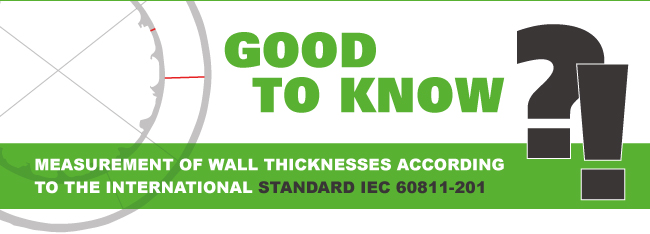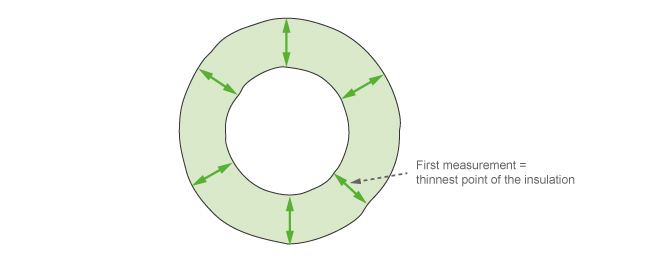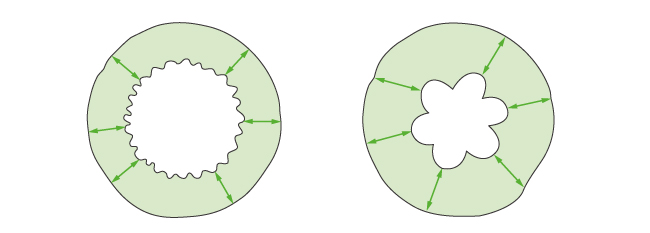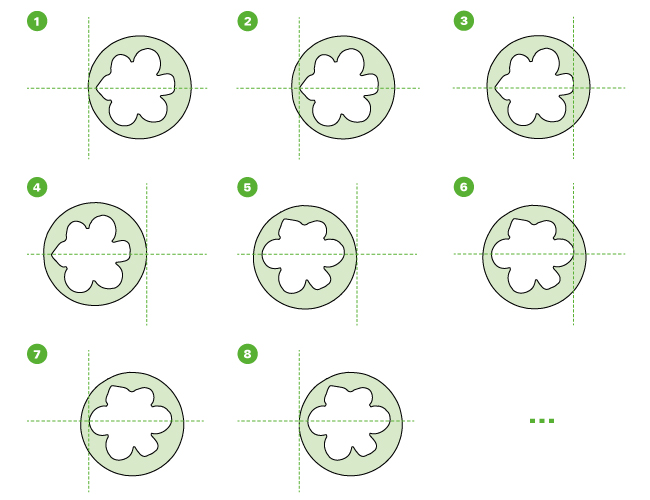
Dear Ladies and Gentlemen,
in this newsletter issue, we would like to grant a brief insight into the international standard for cable measurement IEC 60811-201* - in particular for the measurement of wall thicknesses.
These wall thicknesses are to be measured at different locations and with different numbers of walls depending on the shape of the given cross section. In our example, we have selected two cases, where the standard leaves plenty of room for misinterpretation and operator errors:
- Case 1: Cables with circular shaped inner profile
- Case 2: Cables with 6 or more cores in the inner profile – stranded conductors
These two cases are described and displayed as the follwing in the standard:
- The first measurement must always be carried out at the thinnest point of the insulation.
- “The test piece shall be placed under the measuring equipment with the plane of the cut perpendicular to the optical axis.”
Case 1: Six measurements shall be made radially, each approximately 60°

Source: Based on the representation in the standard IEC 60811-201
Case 2: Six measurements shall be made radially

Source: Based on the representation in the standard IEC 60811-201
In the images above, which are based on the displays in IEC 60811, the following is easily visible:
- The wall thicknesses are not essentially radial and measured towards the centre. The shortest distance between inner and outer profile is measured.
- The measuring distances are not evenly or exactly 60° and they vary. Although the standard mentions the walls shall be measured radially and in approx. 60°.
What influence does this have on conventional measuring methods, e.g. microscope or profile projector?

If the measurements are performed at exactly 60° distances and are only measured towards the centre, as it usually is with conventional methods, the following problems might arise:
- It is generally difficult finding the first measurement at the thinnest point of the cross section with a manual measuring device – especially without measuring towards the centre
- The complete measuring procedure as described in the standard is user-dependant and therefore not standardized
- Often with manual measuring devices with a rotational measuring table, it is standard to measure exactly at 60° without paying attention to local minima
To illustrate possible errors and problems resulting from the differences, we have a concrete measuring example:
| Value „Minimum Wall“ directed towards the centre (radial) | Value „Minimum Wall“ according to IEC 60811 |
| 2.579 mm | 2.481 mm |
As you can see above, the values between these two types of minimum wall thickness are quite different. This can lead to quality issues. The measurements with images can be found here.
Our intelligent cable measuring system can help you perform standardized, operator-independent wall thickness measurements according to standards.
Further details about the difference between either strictly measured 60° thicknesses and local minima, as displayed in the standard we will illustrate in our next newsletter issue.
*Should you wish to purchase the standard for further research, here is one supplier.
Should you have questions about our cable measuring solutions
or be interested in our training programme, please reply to this email or call us at +49 (0)3681 / 455 19-0.
We would be happy to inform you about this and many more topics
as well as the resulting influences and hazards.









 To the imprint
To the imprint